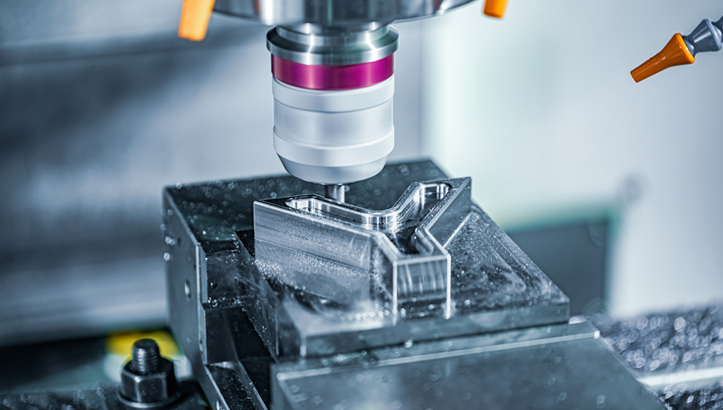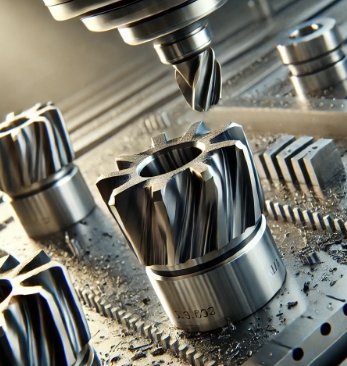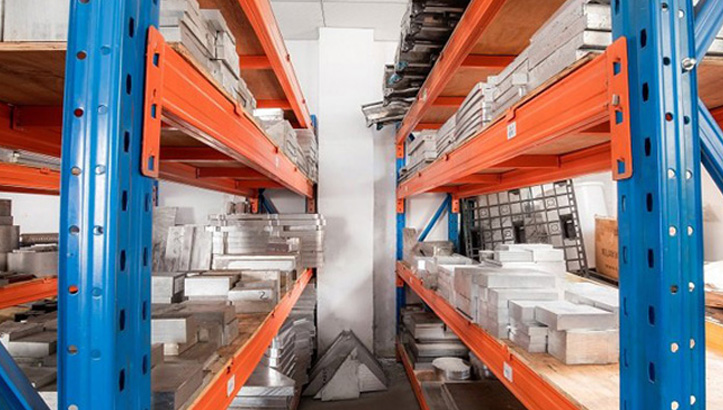What is Slot Milling? Definitions, Types, and Tips
Struggling to understand slot milling and its applications can lead to inefficiency, incorrect tool selection, poor-quality slots, excessive tool wear, and wasted materials, all of which can hurt your production time and costs. To address this, this article will define slot milling, explore its various types, provide tips for optimal tool selection, and help improve your milling operations for better results.
Slot milling is a CNC process used to create precise slots and grooves in a variety of materials. It involves using slot milling tools and techniques to achieve the desired slot size and quality. Whether you need slot cutter milling or slotting tools, this guide will provide you with all the information you need to optimize your slot milling process.
Let’s dive into the details of slot milling, covering the different types of techniques and tools to help you choose the right approach for your project.
What is Slot Milling?
Slot milling is a specialized machining operation where grooves or slots are cut into a workpiece, typically using a rotary tool like a slot milling cutter or slot cutter milling tool. This process can be performed on materials such as metals, plastics, and wood, and is commonly used for applications like securing parts in machinery, providing space for fasteners, or forming keyways for shafts. The process is done on CNC milling machines, ensuring high precision and repeatability.
Unlike drilling milling, which focuses on creating holes, slot milling creates elongated openings or grooves. The width and depth of the slots can vary based on the project needs, and tools like slotting mills are chosen accordingly. By using different cutting strategies and tool combinations, slot milling can create a wide range of slot profiles, such as straight, T-shaped, and keyway slots.
Types of Slot Milling Techniques and Their Cutters
Here’s an in-depth look at the various slot milling techniques and the corresponding cutters:
1. Straight Slot Milling:
Straight slot milling uses slot milling cutters with straight edges to create uniform, narrow grooves in a workpiece. This technique is highly versatile and can be used to create simple grooves, channels, or even recessed spaces in parts. The cutting tool typically uses a single edge or multiple edges, depending on the required slot width.
2. T-Slot Milling:
T-slot milling is a specialized operation designed to create T-shaped slots, often used in securing parts onto machines or fixtures. A T-slot cutter is typically used, which features a cutting edge on both sides of the tool. The T-slot created has a wider base and a narrower top, allowing for the accommodation of bolts or other fastening mechanisms.
3. Keyway Milling:
A keyway milling operation is used to cut a slot into a shaft to fit a key, ensuring the connection of rotating components. This type of milling often uses keyway cutters, which are designed to produce precise, square-edged grooves. These keyways are typically necessary in applications where precise alignment of parts is critical, such as in power transmission.
4. Groove Milling:
Groove milling involves creating wide, flat-bottomed slots that can be used for parts like O-rings or seals. The tool used for groove milling is typically broader than standard slot milling cutters, and the operation is designed for parts that require a wider groove with greater depth.
What Machines Are Used for Slot Milling?
Slot milling can be performed on various machines, depending on the size and complexity of the slots being cut:
1. CNC Milling Machines:
CNC milling machines are the most common machines for slot milling due to their versatility and precision. They offer the ability to use various slot cutters and slot milling tools, making them ideal for intricate slot shapes and sizes. The CNC control ensures that the tool moves with high accuracy, creating precise slots even on complex geometries.

2. Slotting Machines:
Slotting machines, or shaping machines, are specialized machines designed specifically for cutting slots. They feature a vertical or horizontal spindle that moves up and down, allowing for the cutting of deep, narrow slots in hard-to-machine materials. This machine is particularly useful for cutting keyways and other deep slots where regular milling machines might struggle.
3. Slitting Machines:
Slitting machines are used for making narrow slots or cuts in parts. They are equipped with rotary cutters that slice through materials like metal or plastic, and they are often used in operations requiring thin, precise slits or grooves. The cutter blades used are often very thin to reduce material wastage.
4. Vertical and Horizontal Milling Machines:
Vertical milling machines have a vertically oriented spindle, whereas horizontal milling machines have a horizontally oriented spindle. Both types of machines are commonly used in slot milling, though horizontal machines tend to be better for deeper slots or when larger slots need to be cut. The choice between vertical and horizontal depends on the complexity of the part and the cutting method being used.
Advantages of Optimal Slot Milling
When slot milling is performed with the right techniques and tools, it offers several significant advantages:
1. High Precision:
Slot milling enables high-precision cutting, allowing manufacturers to produce slots with tight tolerances. This is especially important in industries like aerospace and automotive, where the dimensions of the slot must meet exacting standards.
2. Versatility Across Materials:
The process can be used to mill a variety of materials, including metals, plastics, and wood. Whether you’re working with tough materials like titanium or softer ones like aluminum, slot milling can be adapted to meet your needs.
3. Reduced Tool Wear:
By using the right slot milling cutter and optimal cutting parameters, tool wear can be minimized, extending the lifespan of your tools. This can significantly reduce operating costs in the long term.
4. Improved Efficiency:
Slot milling allows for quick and efficient removal of material, reducing production time for parts with multiple slots or complex geometries. The right combination of tool and machine speeds ensures optimal performance while minimizing downtime.
Toolpath Techniques on Slot Milling
When performing slot milling, selecting the right toolpath is essential for achieving the desired results. The main toolpath strategies used in slot milling are climb milling, conventional milling, and helical milling. Let’s break each one down.
1. Climb Milling
Climb milling is a technique where the cutter feeds in the same direction as the rotation of the tool. This method is highly effective when working with tougher materials such as steel and titanium, as it reduces the force on the tool and results in a cleaner, smoother surface finish. The cutter takes a lighter cut as it moves into the material, allowing for more efficient material removal with less friction.
This technique is favored for slot milling when precision and surface finish are important. By reducing the load on the tool, it also minimizes tool wear and extends the life of the cutter. Climb milling is especially useful when dealing with harder metals, ensuring that the cut remains smooth and the material doesn’t tear or chip.
2. Conventional Milling
Conventional milling is the opposite of climb milling, as the cutter feeds against the rotation direction of the tool. In this technique, the cutter starts from the bottom of the slot and moves upward, pushing material ahead of it. This method is often used for slot milling when a more controlled cutting process is needed, particularly with softer materials like aluminum or plastics.
While conventional milling can result in a rougher surface finish compared to climb milling, it is preferred when the machine lacks the rigidity for climb milling or when a more conservative approach to cutting is necessary. The cutter experiences more friction during the process, leading to higher tool wear, but this method offers more flexibility in certain situations.
3. Helical Milling
Helical milling is used when deeper or more complex slots are required. In this technique, the cutter moves in a spiral or helical motion, gradually plunging into the material while simultaneously moving along the length of the slot. This method allows the tool to maintain a continuous cutting action, both radially and axially, making it ideal for deep slot milling.
The advantage of helical milling is that it reduces the load on the tool by distributing the cutting forces over a larger area. This results in less tool wear, better chip removal, and the ability to cut deeper and more intricate slots. Helical milling is particularly useful when precise, deep, and complex slots need to be milled in tough materials without compromising tool life.
What Are the Common Tools Used for Slotting Operations?
There are several specialized tools used for slot milling that are designed to achieve different types of cuts with high precision. Below are the most common tools used in slotting operations.
1. Slot Milling Cutter
The slot milling cutter is the most essential tool for creating slots in a workpiece. These cutters are designed to remove material along the length of the slot, and their shape and size vary depending on the application. The most common types are flat-cutting and side-cutting slot milling cutters.
Flat-cutting slot milling cutters are used for shallow slots and simple cuts, while side-cutting cutters are used for deeper slots or to cut slots with narrow widths. These cutters can be used in various milling machines and are versatile enough to handle a wide range of materials, from soft metals to harder alloys.
Slot milling cutters are available in different materials like high-speed steel (HSS) or carbide, with carbide cutters being more durable for tougher materials. They are typically used for standard slot milling operations, and the cutter’s geometry plays a significant role in determining the quality and efficiency of the milling process.
2. Slot Cutter Milling
A slot cutter milling tool is specifically designed for making precise grooves or slots with tight tolerances. This tool is particularly useful in situations where high accuracy is required, such as in the production of parts for electronic components or precision engineering applications.
The unique feature of slot cutter milling tools is their ability to be indexed, meaning the tool can be adjusted or rotated to extend its lifespan. This makes the tool more cost-effective, as it can be used for a longer time without losing its cutting edge. These tools are ideal for producing narrow, deep, or intricate slots in materials like aluminum, steel, or plastics. They also ensure a clean cut with minimal burrs and provide smooth finishes, making them a popular choice for precision milling.
3. T-Slot Cutters
T-slot cutters are specially designed for creating T-shaped slots, which are commonly used for securing workpieces during milling or other manufacturing processes. These slots are crucial for clamping systems, allowing for easy mounting and repositioning of parts.
The T-slot cutter works by cutting a keyway or a T-shaped groove into the material, which is essential for components like machine vices or clamping fixtures. These cutters are available in various sizes to accommodate different slot dimensions, and they can be used in vertical or horizontal milling machines. They are versatile tools that can be used for cutting both shallow and deep slots in a wide variety of materials, including steel, cast iron, and non-ferrous metals.
T-slot cutters typically have a multi-flute design to ensure smooth cutting action, reduce tool wear, and prevent clogging of chips during the cutting process. Their high accuracy ensures that the T-slots are uniform and provide secure and stable clamping for parts.

4. Slotting Drills
Slotting drills are specialized tools used for cutting larger slots in harder materials, such as steel or aluminum. These drills are designed to handle deeper cuts and can achieve a higher material removal rate compared to standard milling tools.
Unlike traditional drills, slotting drills are capable of milling, making them suitable for operations where a hole needs to be drilled and then expanded into a slot. The drill’s geometry allows for high cutting speeds while maintaining precise tolerance and minimizing tool wear. They are especially useful when dealing with materials that require deeper slots, such as steel alloys and other tough metals, as they can maintain their cutting edge for longer periods.
Slotting drills are equipped with a cutting edge that’s designed for both axial and radial cutting, which improves efficiency in creating longer, deeper slots. These tools also help minimize vibration, ensuring smoother, more accurate cuts.
What Materials Can Be Slot Milled?
Slot milling can be performed on various materials, including metals, plastics, and wood. The material type affects the tools, cutting speeds, and other process parameters used. Below are individual descriptions for each material commonly slot milled:
Metals
Aluminum: Aluminum is one of the most common metals used for slot milling due to its softness and low density. It can be milled at high speeds with sharp cutting edges. Tools like carbide cutters are often used for aluminum milling, and sufficient cooling is essential to avoid burrs and maintain high-quality finishes.

Steel: Slot milling steel, including both carbon and stainless steel, is more challenging due to its hardness. Stainless steel especially requires slower cutting speeds, specialized carbide cutters, and good cooling to prevent overheating. Steel milling also demands careful management of tool wear and cutting forces.
Titanium: Titanium requires special attention during slot milling due to its toughness and tendency to work-harden. Titanium milling requires slow cutting speeds, titanium-coated carbide tools, and cooling methods to prevent overheating. Its high strength and low thermal conductivity make it harder to mill but suitable for high-performance applications.
Plastics
PVC: PVC is a widely used plastic for slot milling due to its relatively low hardness. However, it can soften and deform under heat, so using sharp tools and moderate cutting speeds is important to avoid material melting. Proper cooling helps in maintaining a smooth cut and preventing deformation.
Acrylic: Acrylic is a brittle thermoplastic often used in signage and displays. When milling acrylic, low cutting speeds and sharp tools are necessary to avoid cracking or chipping. It is also important to maintain cool cutting conditions, often using air cooling, to ensure high-quality results and preserve the material’s clarity.
Polycarbonate: Polycarbonate is a strong, impact-resistant plastic used in safety and optical products. When slot milling polycarbonate, it requires slower speeds and specialized tools to avoid cracking and excessive heat buildup. Adequate cooling and proper feed rates help improve tool life and surface finish.
Start your CNC Milling Project at VMT
Initiate your CNC milling project at VMT, where we prioritize precision and quality in every aspect of our work. Our expertise spans a wide range of milling processes, notably including slot milling, ideal for crafting accurate grooves and channels in materials such as metals, plastics, and composites.
Whether you’re fabricating components for mechanical, electrical, or aerospace industries, our CNC milling machines ensure precise tolerances and flawless finishes.

In Conclusion
Slot milling is an essential process for creating precise slots and grooves in materials. By choosing the right tools, understanding milling techniques, and optimizing toolpaths, manufacturers can enhance the quality and efficiency of their slot milling operations. Whether you’re working with metal, plastic, or wood, understanding how to effectively use slot milling cutters will ensure your parts are accurately fabricated and meet your project’s needs.
More Resources: What’s Side Milling? Types, Uses and Techniques
What’s End Milling? End Milling Process, Different Types of End Mills
What is Form Milling? How Does it Work?
Frequently Asked Questions About Slot Milling
What is the Difference Between a Slot Mill and an End Mill?
A slot mill is designed specifically for cutting slots or grooves in materials, with teeth on the sides and the end of the tool. An end mill, on the other hand, has cutting edges on the sides and at the tip, making it more versatile for various milling operations, such as profiling, drilling, and slotting.
What Are the Three Types of Milling?
The three primary types of milling are:
- Face Milling: Cutting flat surfaces using the face of the cutter.
- Peripheral Milling: Cutting with the outer edges of the cutter.
- Slot Milling: Cutting grooves or slots in a workpiece.
What is the Difference Between Slot Milling and Peripheral Milling?
Slot milling uses a cutter to create a narrow, deep groove or slot, typically with a tool that cuts into the workpiece’s side and bottom. Peripheral milling, however, cuts along the outer edge of the workpiece, removing material from the sides and typically producing flat surfaces, with the cutter engaging only the side of the tool.



